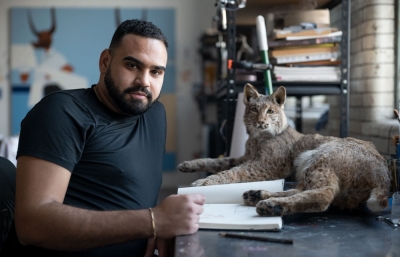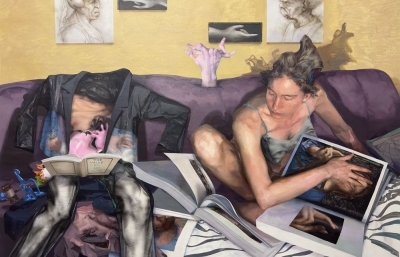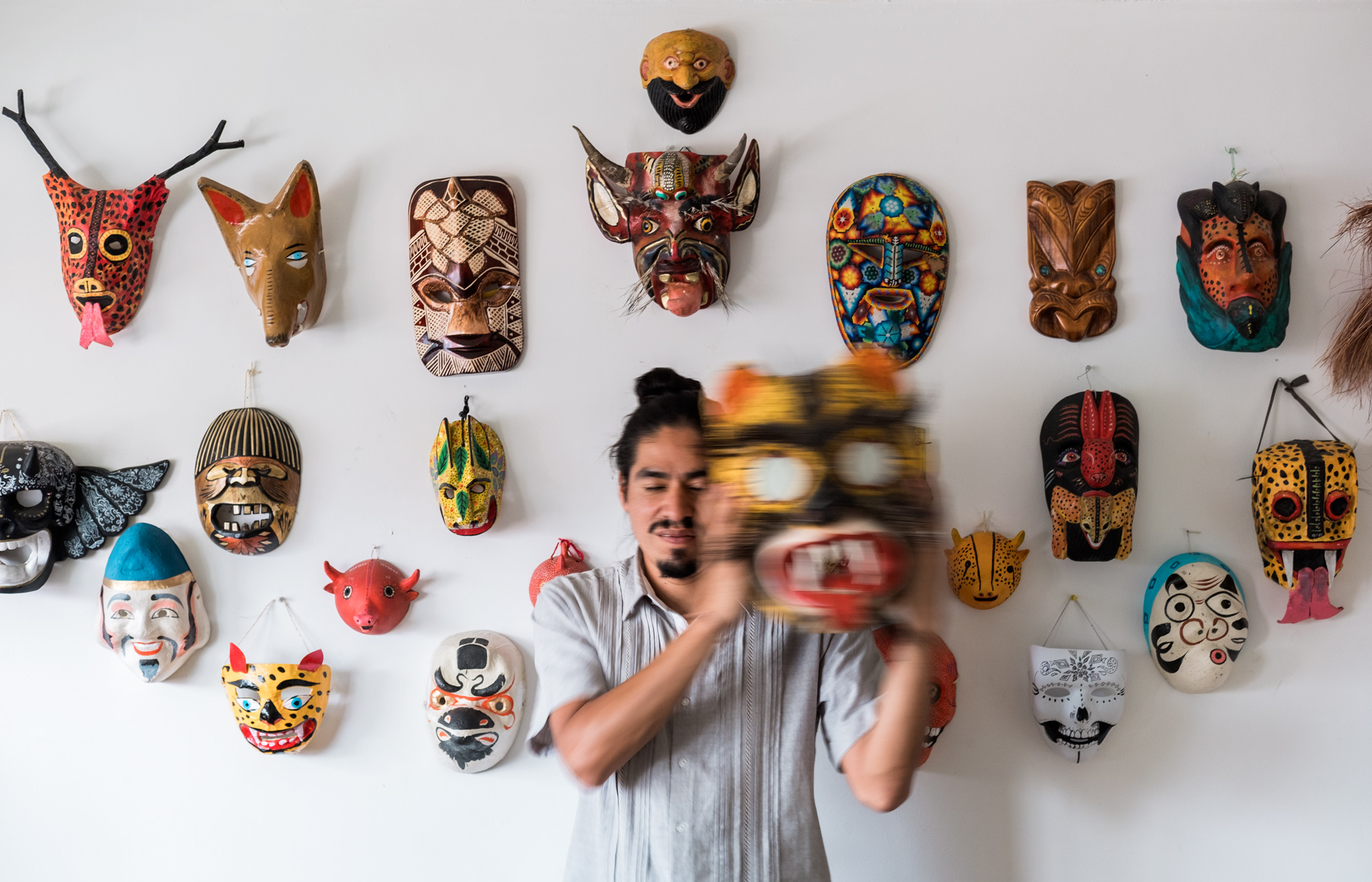
Saner
Masked But No Stranger
Interview and portrait by Alex Nicholson
Edgar Flores, aka Saner, paints in a small upstairs room in his suburban enclave outside Mexico City, where light pours in from a wall of windows. Opposite are cabinets and shelves with neatly organized books, labeled boxes of pens, brushes, and other supplies. Large, unfinished canvases hang on a third wall, and the last holds an ever expanding mask collection. A custom-made table complete with storage compartments and adjustable drawing surface, an artist’s dream, dominates this room where masks float around him like trophies.
Saner has painted murals and participated in exhibitions everywhere from Morocco to Arkansas, combining contemporary Mexican and ancient Aztec and Mayan iconography with local history and folklore from around the world, as he tries to understand what divides us, and, hopefully unites us. Such travels have strengthened his roots and resolve to be part of a generation that learns from elders, teaches its youth, and creates positive change in a complicated world. “Sometimes society builds walls,” he tells me, “but if we never break them down, we’ll never have the opportunity to find out what kind of society we can have.”
Alex Nicholson: How has your art evolved since bringing it to so many cities and countries?
Edgar “Saner” Flores: I think when you visit more places and meet more people, you better understand the kinds of connections and separations between us. I just try to talk in a universal language, try to find the things we have in common. Whether it’s the government or the economy, we all have the same problems, and I try to speak to that. If we work together, it doesn’t matter if we are different in culture or color because, in the end, we are humans and we can find the solutions.
When I visit different countries, I often use symbols from Mexico, combining them with others from the host country, creating one visual language. A mural might reference a mask from Mexico but the character might look more like someone from the country I’m in. And when people look for meaning behind the piece, I just say we all have the same things. In one country, an offering of tea might be the entire greeting, it’s to break the ice. Here in Mexico we simply say, “Buenos dias,” words that have the same effect.
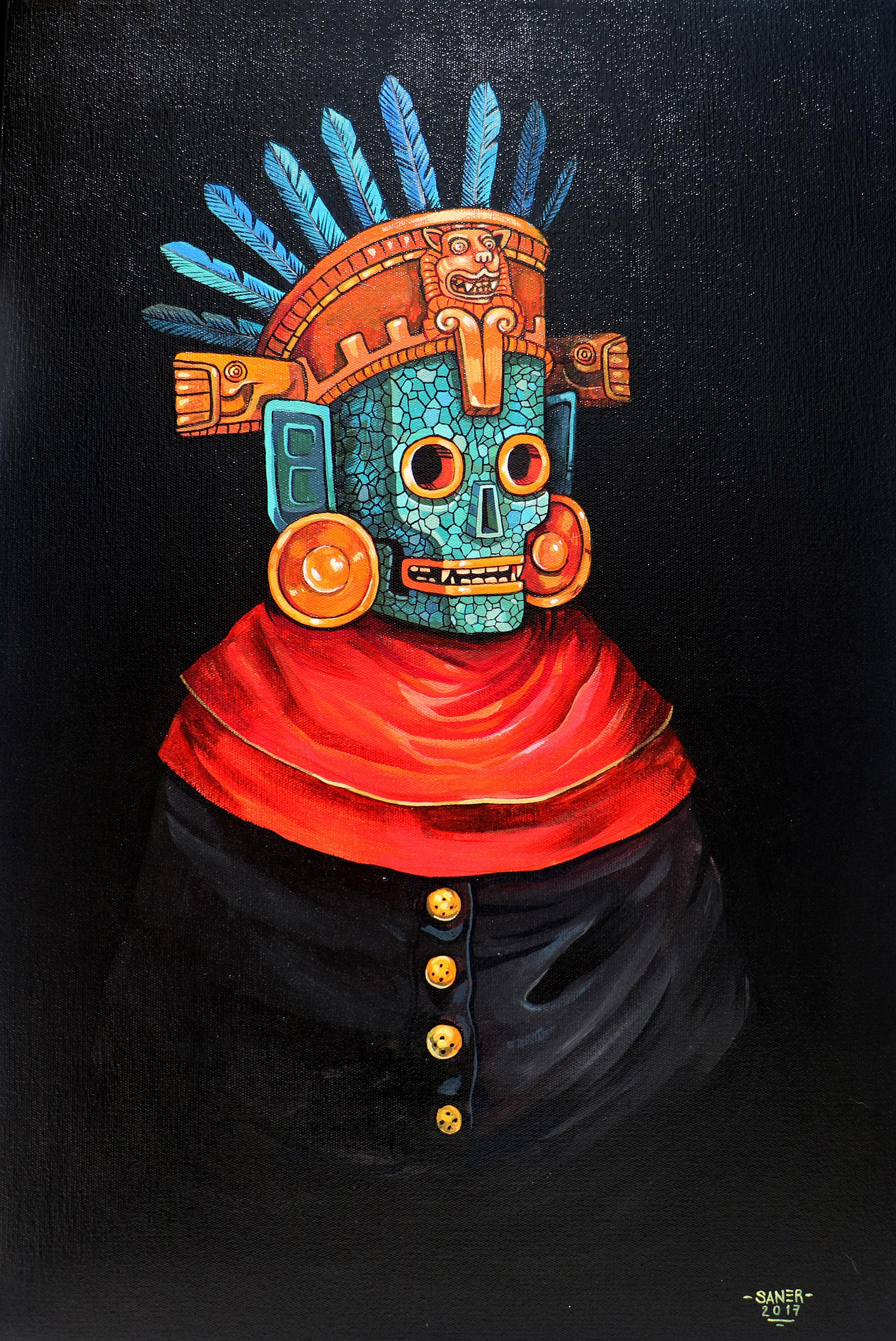
Simple actions change your day, your life. You may speak a different language but people will try to find a way to help you. You have the weapons to change a life, not weapons to kill people but to help people. You don’t need real guns, but to believe in yourself and believe in the other person to try to find a better life or opportunities for change.
Are those things you thought about before traveling outside of Mexico?
Yes. When I started to paint the masks, clothes, and other traditional Mexican symbols, it was because I used to feel confused and was copying the styles from other places, like I was trying to be a person from Europe or the United States. At a certain point, I asked myself why, as if living in Mexico meant you didn’t have good things. So I started to search for the rich things in Mexico, the colors, traditions, foods, and the people. When you travel and meet other people, it’s the same elsewhere, the feelings about life. It’s strange because, in Mexico, you just want to imagine how different your life could be in another country, but when you visit those countries, it’s not really much different.
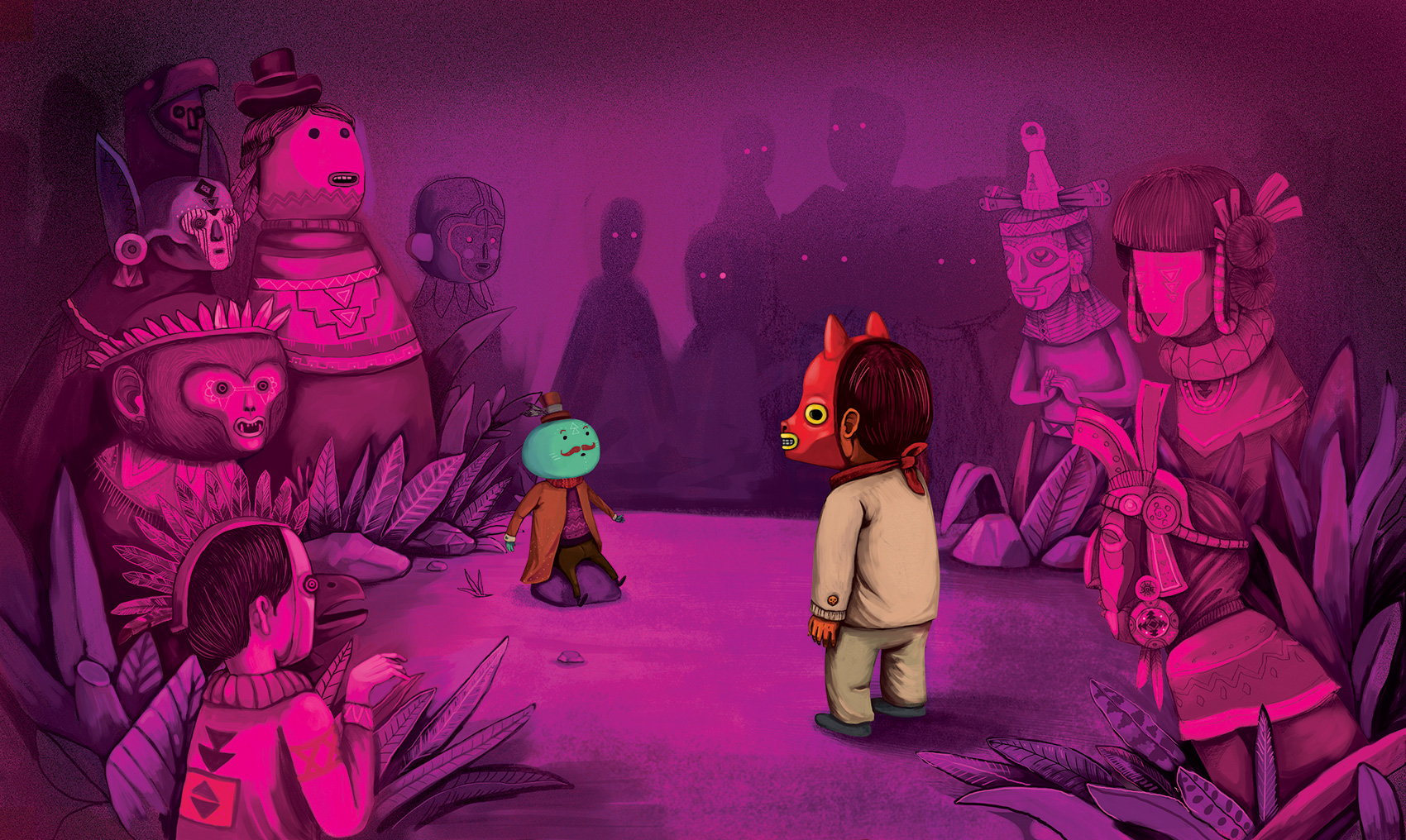
They are human problems. It’s interesting that you made a book for children, because looking at your paintings, I thought about how children don’t really have these masks yet.
Because they are clean, no? Though, it depends on the society. When you are a kid, you are told things like you can’t talk with Mexican or African people, or rich or poor people, and you ask, “Why?” Those rules only exist in the imagination of the society. When you are divided, you’ll fight with your brothers or your sisters, but if you learn that differences don’t matter, you open other opportunities. We are still trying to break these walls down, so we’ll have the opportunity to find out what kind of society we can have, so when I receive projects for children, I usually accept them right away. When you show different things to kids they start to learn. I made a theater show for kids, and it was really interesting. At first, the kids were afraid because the characters were a little scary, but the story was about love and by the end the kids told me, “Wow I love this kind of show!”
Much easier than changing an adult mind.
When you are older, things are embedded. Like Jodorowsky said, you need to make a solution in your past, in the beginning, in order to change your present. Sometimes it’s difficult to understand that and to go back. When some adults read the book, Koben, that I made, they told me they started to cry. They found something in their soul and fixed it. It’s not just for kids, it’s for everybody. In the end, you are a kid forever.
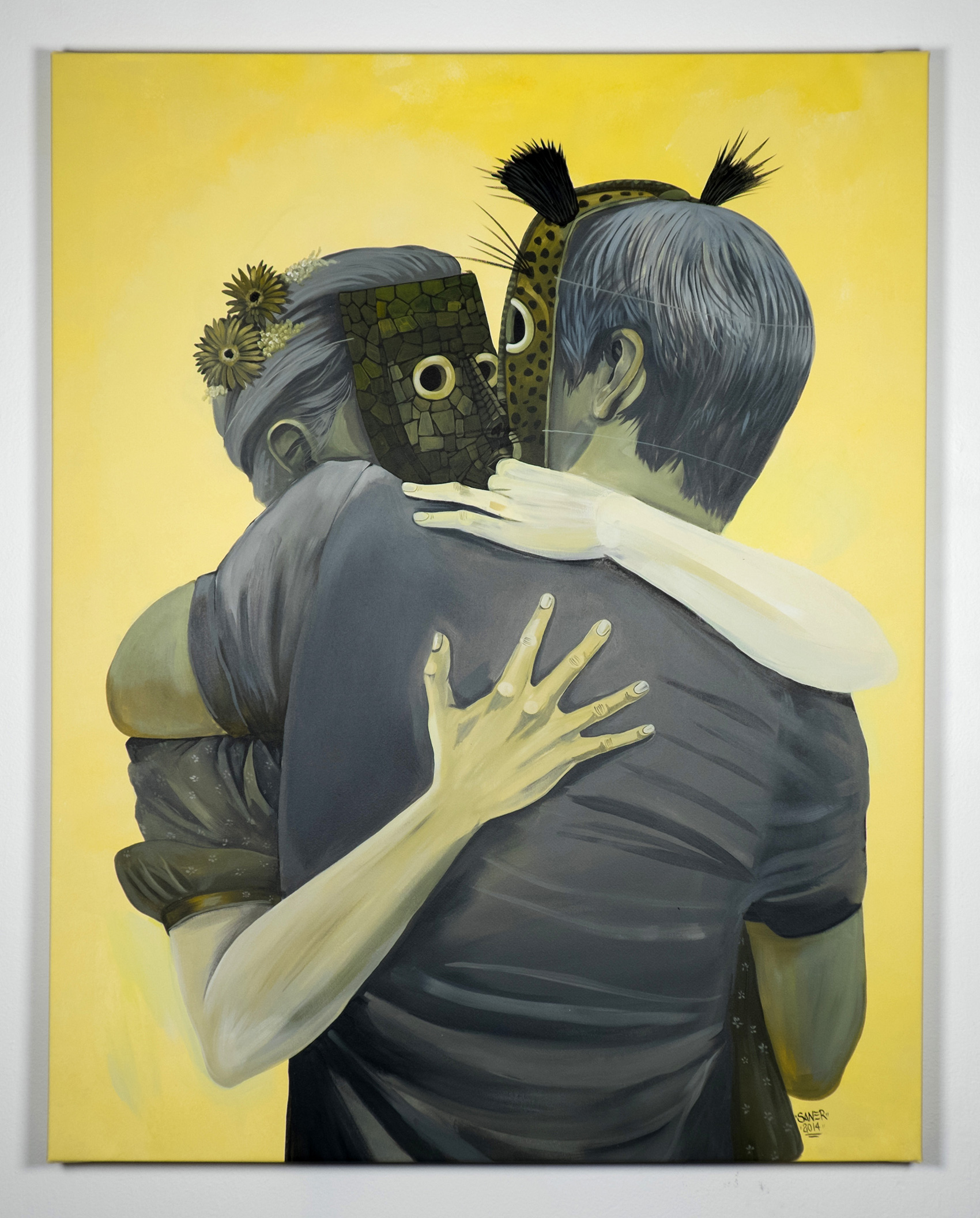
In creating and thinking about these kinds of things, what have you discovered that you needed to address?
The most important thing was appreciating the rich legacy my parents gave me. Growing up, you think you don’t need your parents’ advice; you want to be on your own and figure things out by yourself. But your parents gave you a lot of of the things that you have in your mind, no? I understood that I needed to go back and say, “Thank you, Mom and Dad, because the things that you gave me made me the person that I am now.” My mother is from Oaxaca and lived there for a long time. The traditions and experiences are in your heart and mind, and it’s not until you are older that you understand their significance and why your parents wanted them to be a part of your life.
Did you parents expose you to a lot of art?
My parents liked art but we didn’t have many opportunities to see it, living on the outskirts of Mexico City, an hour and a half away from a museum. I only had time to go to school and help my parents on the weekends. My father would bring us a lot of books, though, so I started to see images of illustrations or specific paintings by Goya, Gustave Dore and others. I thought they were different but had amazing style and hypnotic forms. I always wanted to see them in person, so at the age of fourteen or fifteen, I finally started to visit museums. And I loved to draw when I was a child as well. I started when I was three and spent all of my time drawing. I would copy cartoons or the books my father gave us and sometimes even make stories like the comics I was reading.
Do ideas come to you as you paint, or is there an inspirational “ah-ha!” moment?
Both. I studied graphic design and one important condition is to start with a concept.
It’s good because, before starting a drawing, you have more information about places, traditions, or specific concepts that give you more options to explore.At first it may be the internet or books and magazines, but if I’m traveling to another country, I try to speak to people, ask questions and see if what I learned was correct. I try to take in all the information I can and decide on the final image I want to create.
Do you prefer painting murals or being in the studio?
In the end, it doesn’t matter. I love to create images and I can learn a lot in any situation. It’s good to know how to use a brush, or a spray can, a pen, or a computer because then you are ready for anything, ready to do things fast or slow. You do have to work fast sometimes. It’s good when you have time but, at the festivals or with mural projects, you often have a time limit. If you have a month, it’s great, but if you have just three days, you need to learn how to adjust. When I’m traveling, I am only thinking about what I’m going to do the next day, a different process from the studio.
Do you keep a strict schedule when you are home?
I used to say yes to everything and I wouldn’t have time for it all. It was impossible, so it’s better to schedule time for every project so I can finish and be happy with the result. If you feel bad about how something went, you’ll feel sad forever because you didn’t say no. It’s better to have the option and not feel guilty.
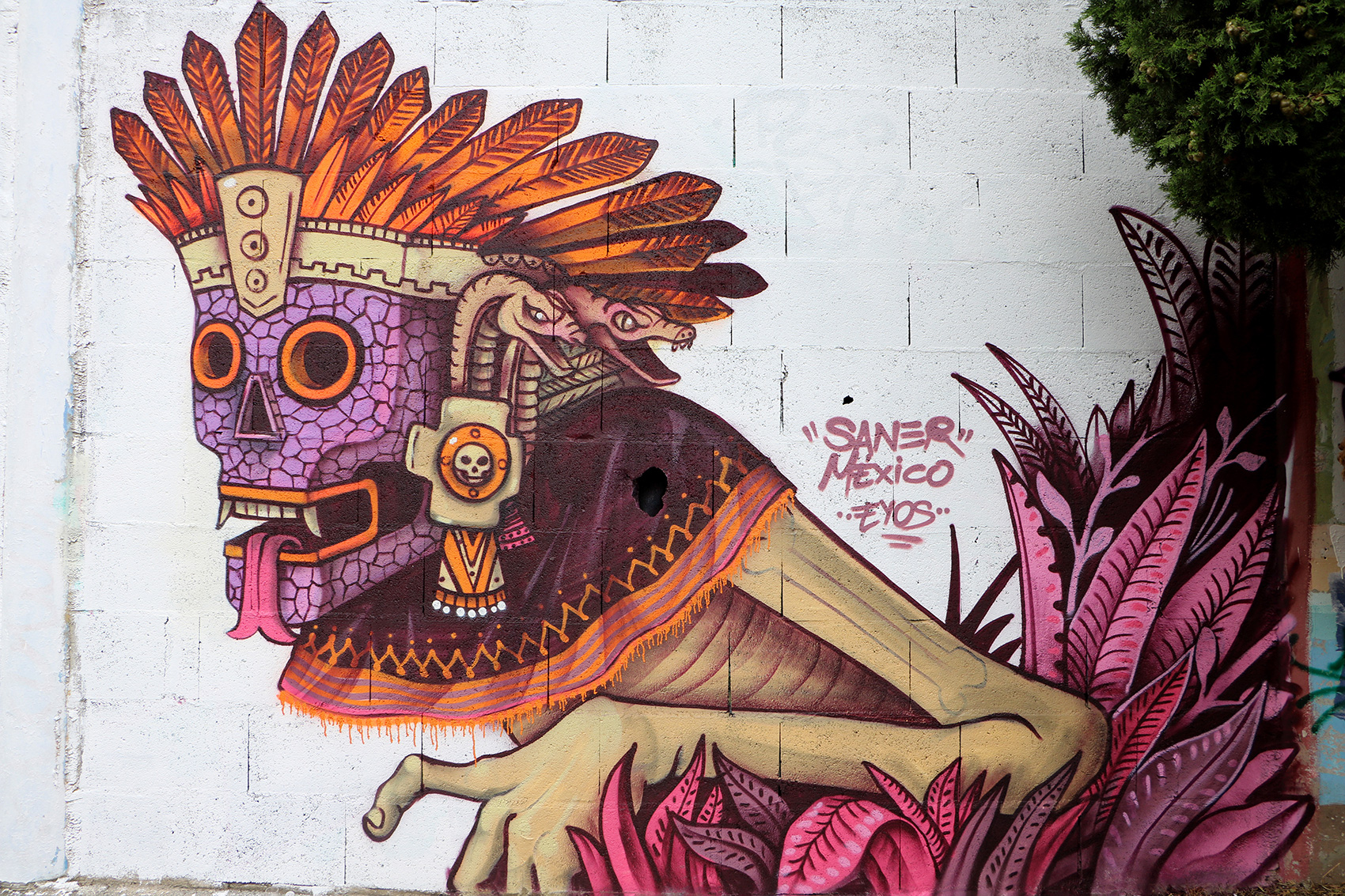
When you start working on something or once you finish, can you leave it behind, or is it always in your head?
It’s always on my mind. I remember projects from five years ago. Thinking about past projects can remind you of everything you learned, both bad and good.
If you could go back and tell your 20-year-old self something, what would it be?
Nothing. You need surprises. If you had the opportunity to tell yourself, “Hey, don’t do this,” you lose the surprise of life. When I was 20, I wanted to be a big graphic designer and work in an agency but, along the way, I encountered things that transformed me into the person that I am now. I never thought about going to different countries to paint or having the opportunity to meet a lot of people from other places. And I can’t believe I am able to survive just painting! These surprises are the secret of life.
Some surprises can be obstacles. How do you approach those?
It doesn’t matter what people say about you, the most important thing is what you say about you. This is the most important because you know your soul better than another person. Someone can come to you and say you need to change this thing or that, but, “Hey man, you don’t know me better than I know me!” Sometimes you might think that you need help because it’s not easy, we live with a lot of confusions. Now I’ve learned these things and can say this, but years ago... [laughs] definitely not!
What is one of the most beautiful things you’ve ever seen?
The moments when you realize you are alive. You go to work, go home, sleep, wake up, eat breakfast, simple things, but you don’t stop for a second and just look back, look to the right and to the left and say, “I am alive. I have something special.” It’s the simple things.
You recently got married, so do you mind me asking if that experience has affected your understanding of the different masks we wear?
It’s not about being married but about having a special person in your life. We’ve learned a lot in all these moments together and we try to take off the masks and show the real person, with our problems and our solutions, try and become like a key to each other because, in the end, we work together. I think that is a really hard thing in life, totally believing in somebody. Not belief like, “He’s my friend,” or “He’s my brother,” but more. Sometimes we say, “Oh, he maybe doesn’t understand me,” but in the end, if you believe in the person 100%, it doesn’t matter.
What scares you the most?
If I lose my job, I will figure something out. And death? No, because at some point we need to go to the next level, and that’s good. My talent? Maybe that’s scary, if I lost the opportunity to make drawings, but I think if something happened to my hands, I’d just learn with my feet or something.
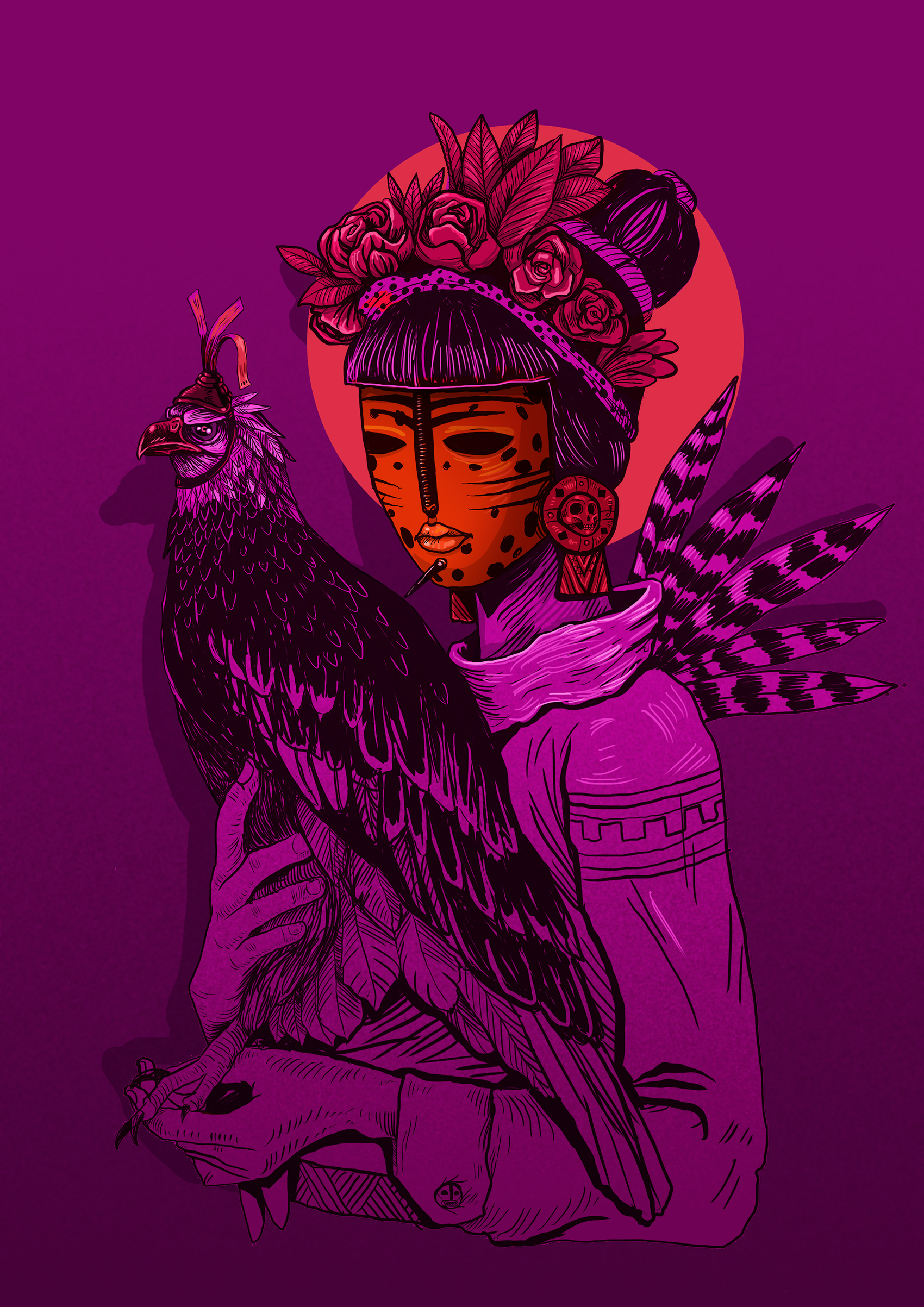
That’s it, that’s what scares me, losing my passion. Because if you lose your passion, it’s like you are a zombie and you’ve lost everything. If you have the emotion and motivation, you have the light.
Does the light ever feel dimmer, do you lose that motivation?
Yes, motivation can come and go. Sometimes I go to volunteer or work with children, see movies or just take my dog for a walk. I try to do a lot of things that aren’t directly related to art, to what I’m doing. You need to recharge your energy in different things and, for sure, help people. That’s the most important thing.
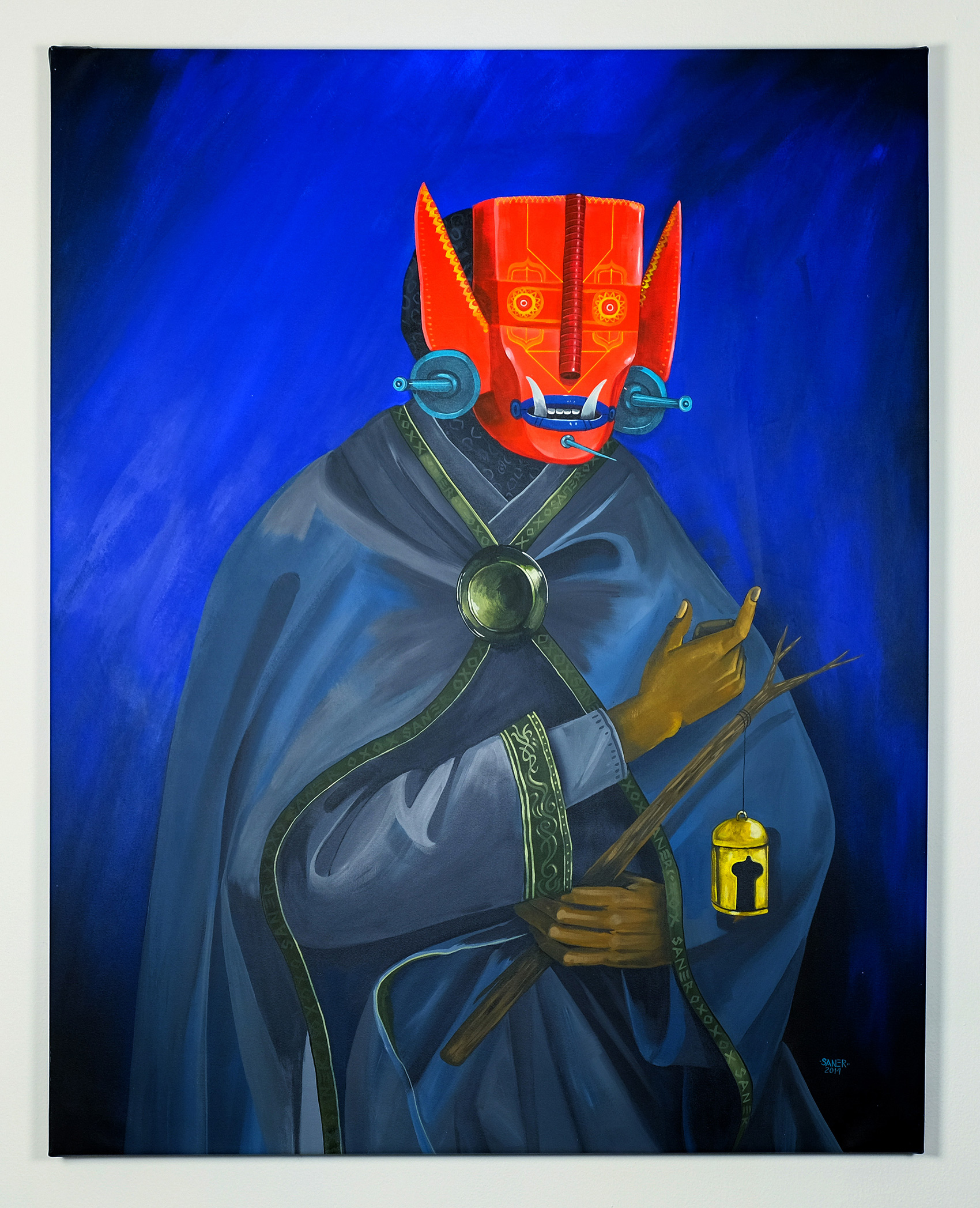
What makes you the most optimistic?
Belief in humanity, belief in all persons. Nothing else matters if you believe in people. Because if you don’t believe, and think that you are just another person with a number, then we will be lost. If you look at Mexico, every day we talk about narco trafficking, wars, a lot of deaths, a lot of problems with the government; it looks terrible, no? But I believe in Mexico and, for that reason, I live in Mexico. Every time we have the opportunity to go to another country, the question is, “Do you want to move, do you want to stay here? Because it looks better than Mexico.” And I say, “Yeah it looks better, but if we move, then Mexico loses, and we don’t want that. We need to work really hard and we need to work together to have more opportunities. Not only Mexico, but every country. I believe in humanity.
In the past, you’ve experimented with interactive exhibitions, even ones that you lit on fire. Are you still thinking about different types of experimental shows?
Yes and no. You can bring experiences, not only with interactive things, but with a performance, or with animation. The last couple years, I’ve just been thinking about how I can make this experience for the people because life is this, no? You receive different experiences and they change your mind for a second. The video mapping and animation were good, but now I really want to go back to a theater show or something like that.
What ultimately made you decide to quit your job and become an artist?
The curiosity, the imagination, the dreams and meeting people. Because, at the beginning, you know your talents but you don’t believe in yourself. You put a wall in front of you and you don’t want to cross the wall because you think you can’t. But some people come to you and say, “No, man, you got this,” and you start to believe maybe it could happen. You start to work and work and, at one point, you break the wall.
We are connected more than ever but that has also brought its own problems.
The important thing is that you can talk to other people. I was in a small town in Perth, Australia, and the Mexican community started to follow me on the Internet and organized to meet at the wall I was painting. It was really cool. They said that when they heard the news I was coming to Australia, they were happy because a Mexican was bringing art to this part of the world, so far from home. One person told me that when he feels homesick, he will go to my mural, open a beer and say, “Salud!” He thanked me for bringing a little bit of Mexico to Australia. That was amazing, so I continue working, because I believe in the world. That person changed my perception. You don’t know the power of your work until somebody tells you something like that.
saner.com.mx

